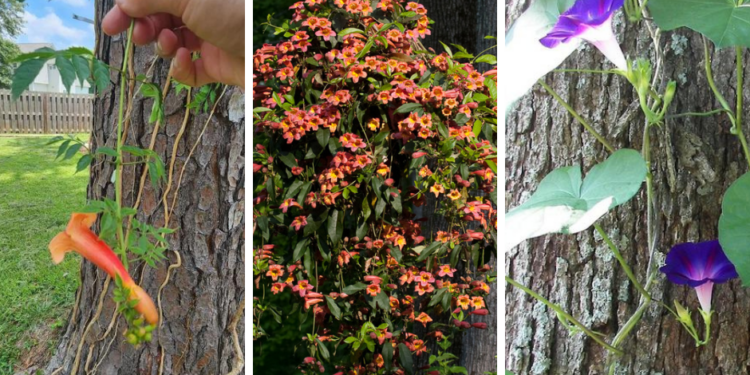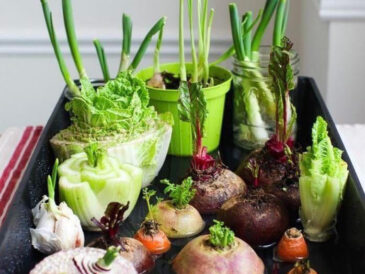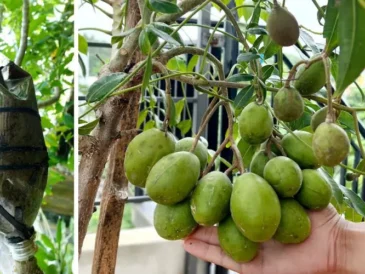3. Virginia Creeper (Parthenocissus quinquefolia)

Known for its brilliant red fall foliage, Virginia creeper is a vigorous grower that can cover large trees quickly. It attaches to surfaces through tendrils with adhesive tips, which do not damage the bark.
This vine is also known for its tolerance of shade and different soil types.
4. Wisteria

Wisteria vines are renowned for their stunning, fragrant flower clusters that can be a breathtaking sight in spring.
However, due to their vigorous growth and heavy weight, wisteria should only be planted on large, sturdy trees. Regular pruning is necessary to control their growth and prevent them from damaging the host tree.
5. Trumpet Vine (Campsis radicans)
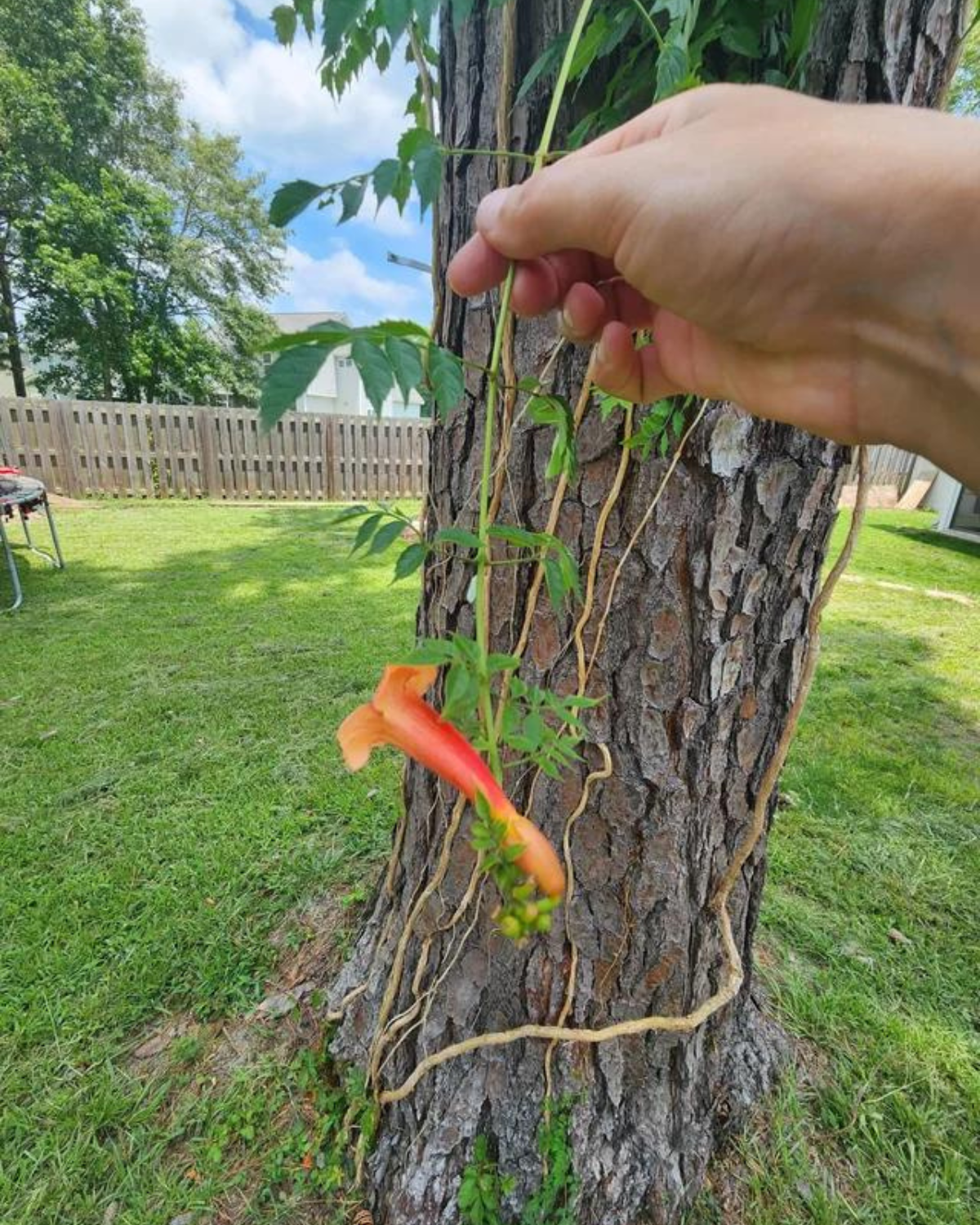
Attracting hummingbirds with its bright orange-red trumpet-shaped flowers, this vine is a robust climber that can reach great heights by clinging to bark with aerial roots.
While beautiful, trumpet vine can become aggressive if not managed properly, so regular pruning and monitoring are recommended.
6. Honeysuckle (Lonicera)

Honeysuckle vines are cherished for their sweet-smelling flowers and ability to attract pollinators. There are many species, some more invasive than others.
Japanese honeysuckle (Lonicera japonica), for example, should be avoided, while native species like coral honeysuckle (Lonicera sempervirens) are generally safer choices.
7. Star Jasmine (Trachelospermum jasminoides)

This evergreen vine features intensely fragrant white flowers and can provide year-round interest. It climbs using twining stems and is excellent for wrapping around tree trunks or draping over branches.
8. Passionflower (Passiflora)

Known for its exotic flowers and rapid growth, passionflower can be a dramatic addition to any garden. While it primarily climbs using tendrils, its weight is generally not enough to harm established trees.
9. Dutchman’s Pipe (Aristolochia macrophylla)

This fast-growing vine is ideal for large trees, providing dense cover and unique, pipe-shaped flowers. It’s particularly good for creating a quick screen and attracting butterflies.
10. Climbing Hydrangea (Hydrangea anomala subsp. petiolaris)

Climbing hydrangea vines attach to tree bark with small aerial roots, making them suitable for growing on rough-barked trees. They bloom beautifully in summer with white, lace-cap flowers against dark green foliage.
11. Kiwi Vine (Actinidia deliciosa)

For those looking for an edible option, kiwi vines can be trained to climb large trees, though they need a male and female plant for fruit production. They are vigorous growers and can produce fruit for several years with proper care.
12. Crossvine (Bignonia capreolata)

This robust climber produces striking trumpet-shaped flowers and can cover large areas quickly. It attaches via tendrils with adhesive disks that do not harm the tree bark.
13. Ivy Geranium (Pelargonium peltatum)

Typically used in hanging baskets, ivy geranium can also climb up tree trunks if guided, offering cascades of colorful blooms.
14. Grape Vine (Vitis spp.)
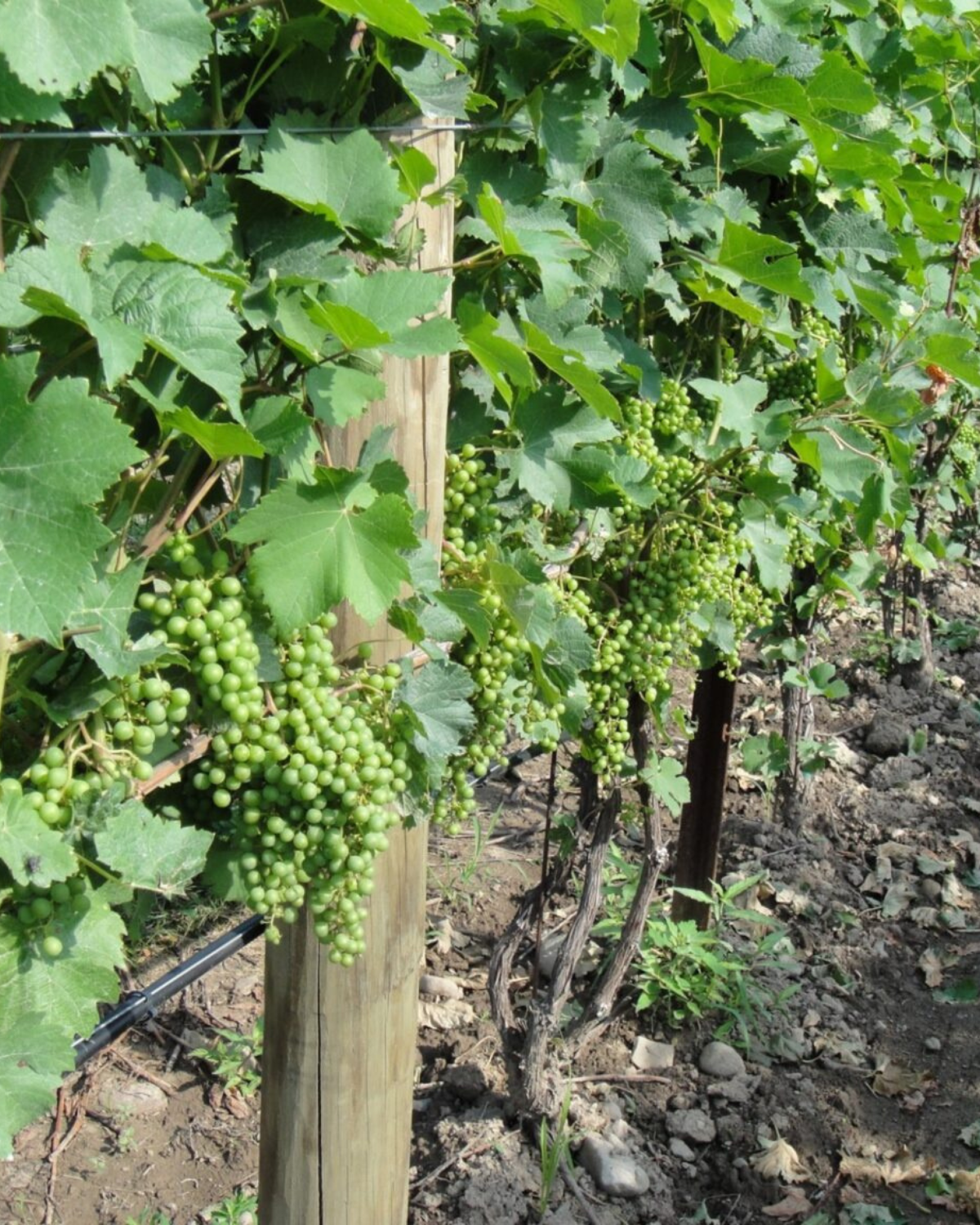
Grapevines can add a rustic look to garden settings and produce delicious fruit. Ensure the supporting tree is robust enough to handle the vine’s mature size and fruit load.
15. Morning Glory (Ipomoea)

Known for their vivid trumpet-shaped flowers, morning glories are fast climbers that can wrap delicately around tree branches. However, some species can be invasive, so choose native or non-invasive varieties.
When selecting vines to grow on trees, consider the health and size of the tree, as well as the growth habit and potential invasiveness of the vine.
Proper selection and maintenance can prevent damage to your trees and ensure that both your vines and your trees remain healthy and beautiful additions to your landscape.
By sharing your experience and asking questions, you contribute to an enriching discussion. Your opinion matters! Feel free to leave your comments below to share your thoughts and opinions on the topic.
